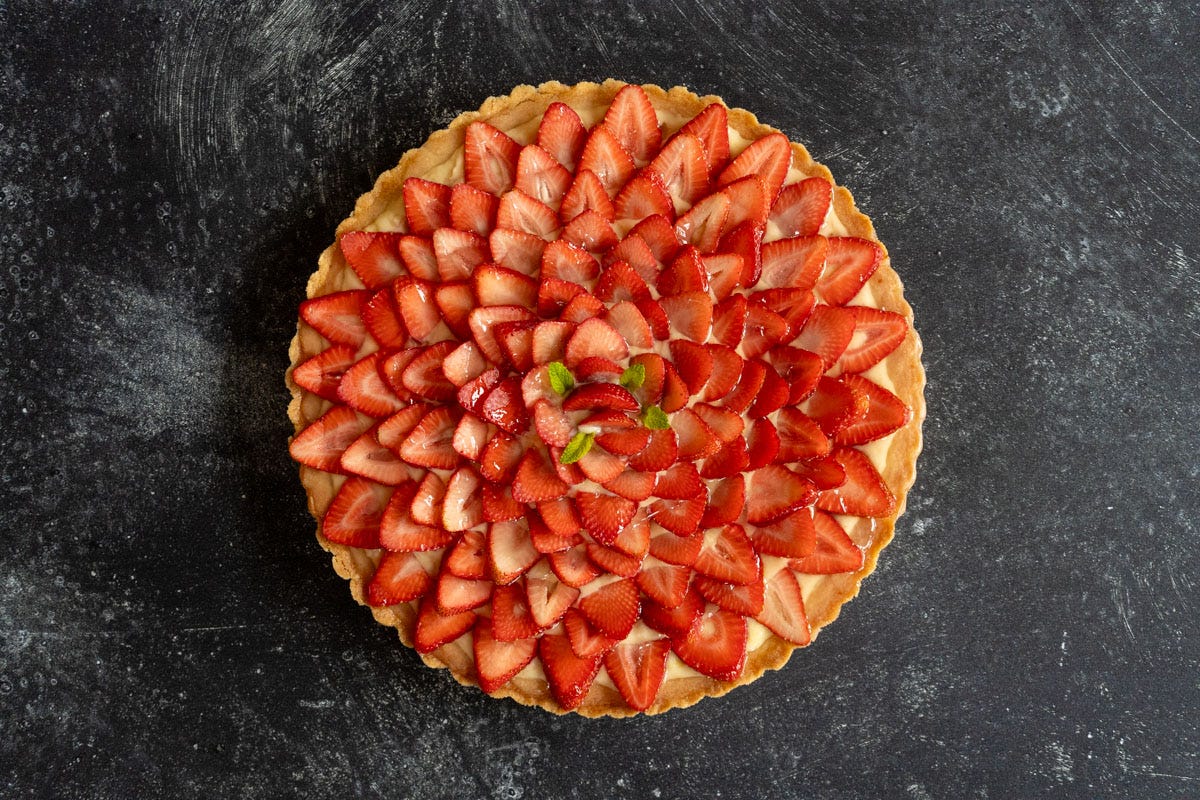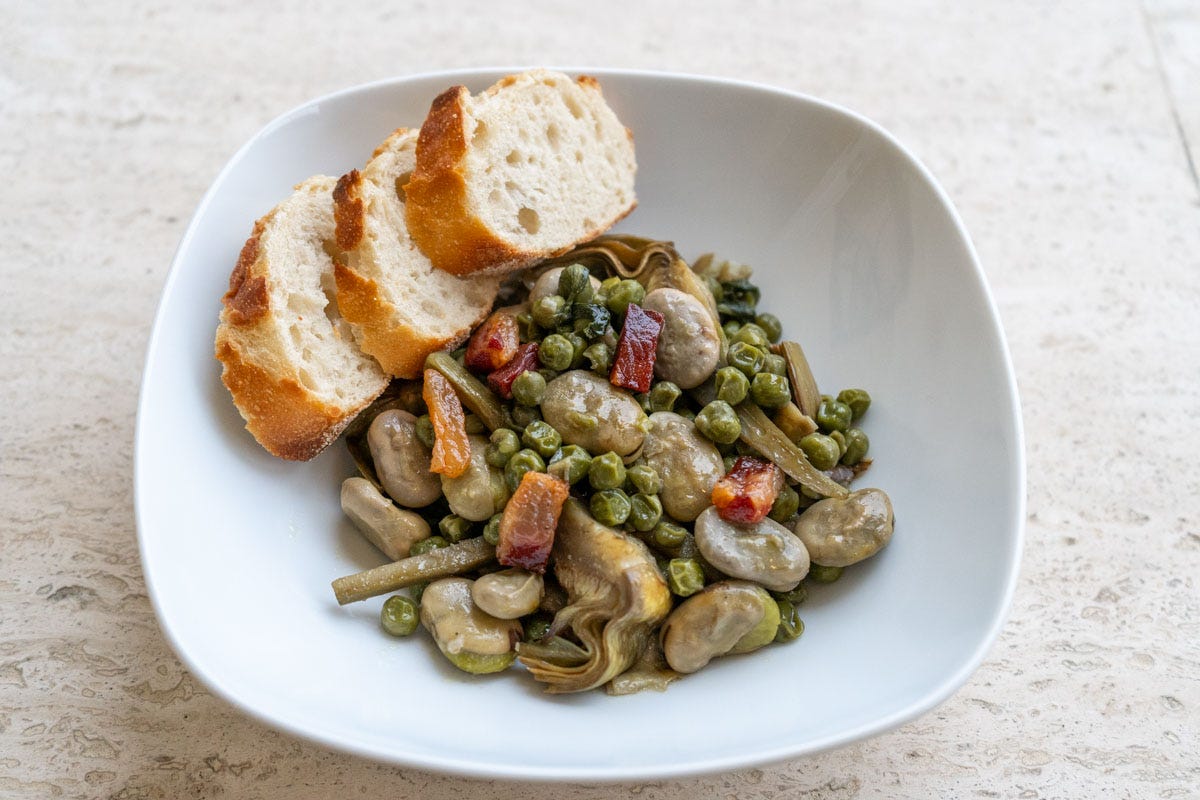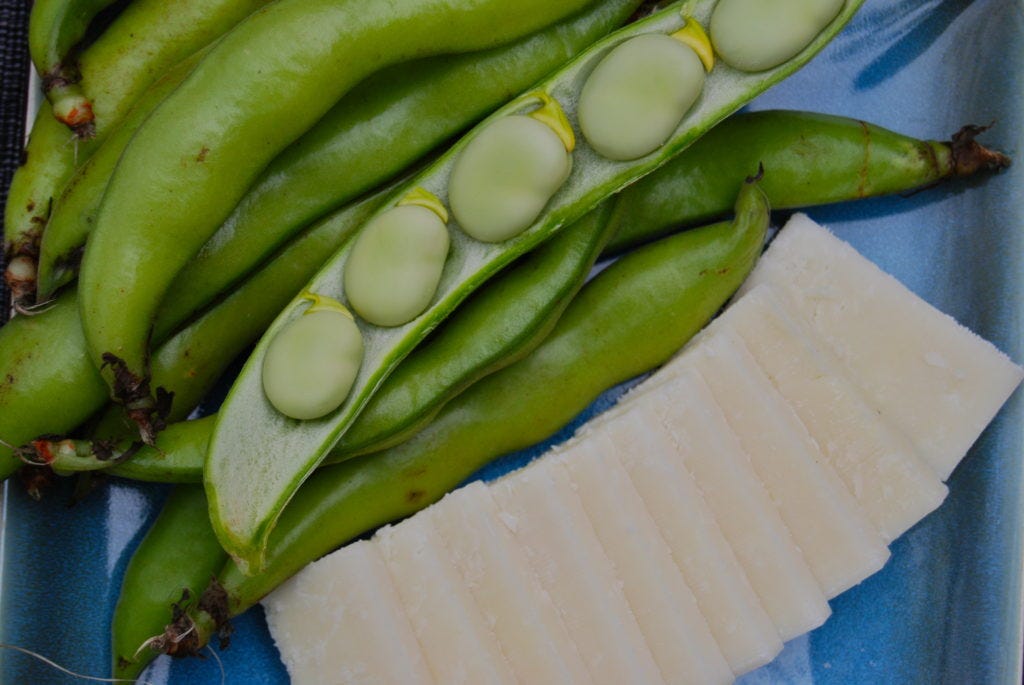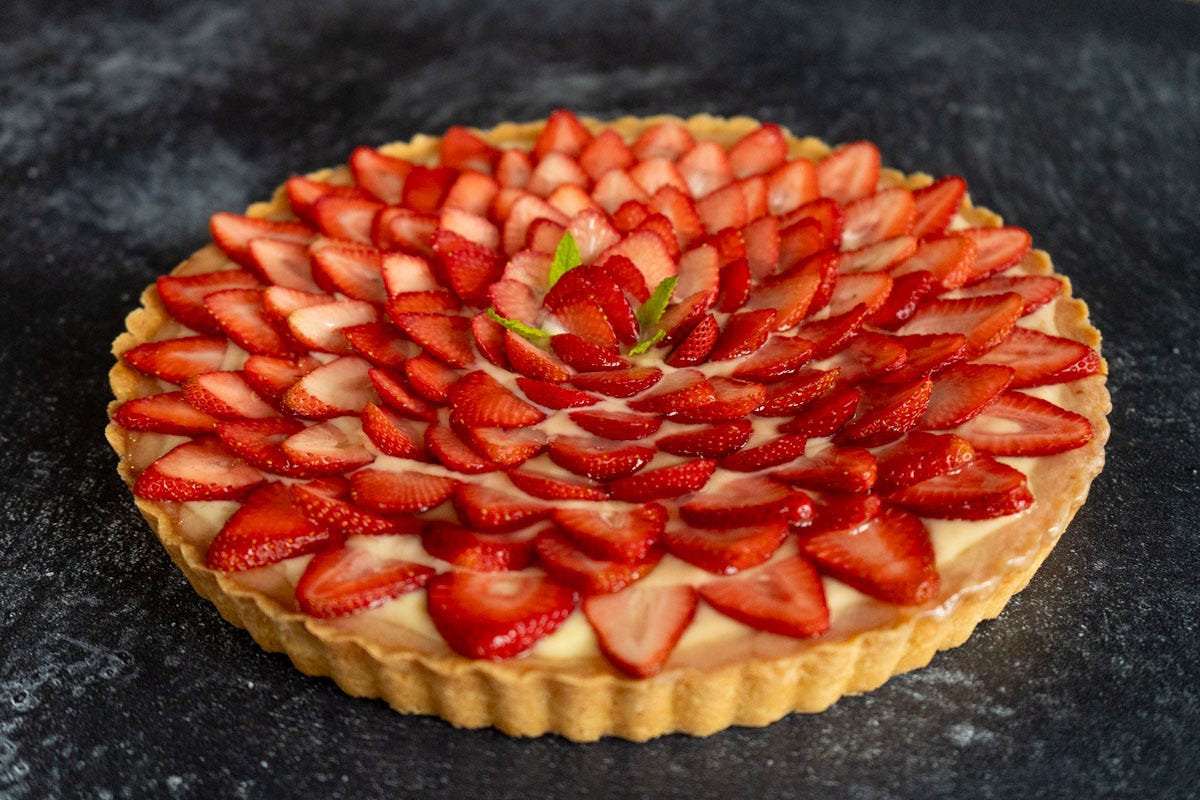On Sundays, when we talk to Stefano’s mom, Maria, on the phone, she always asks about the weather here in Minneapolis and gives us a meteorological update from Rome.
Last weekend, when we told her that we’d had a few warm and sunny days alternating with cool, windy, and rainy days, she exclaimed, "Here, too!” as if we were 50 miles apart instead of 5,000 and our weather patterns were somehow connected.
They aren’t, but the moody, changing weather is a sure sign that it’s primavera, or spring, both here and there. In Italy, where seasonal eating is more embedded into the culture than it is here in North America, a few foods and dishes are making their spring debut.
La vignarola
In Rome, there is a brief window of time when the tail end of the artichoke season meets the start of the fava bean and spring pea season. When that happens, restaurant chefs and home cooks alike take advantage of this vegetal tryst to make vignarola, a classic Roman side dish made by sauteeing green onions in olive oil, then adding fava beans, artichokes, spring peas, and romaine lettuce and allowing it to stew.
In this video, chef Stefania from the classic restaurant Checco Er Carettiere, located in Rome’s Trastevere neighborhood, demonstrates her vegetarian version. We like to add crispy guanciale to ours.
Sourcing fava beans and good artichokes in Minneapolis is a challenge, but with some effort, we did, and we enjoyed this once-per-season dish. If you want to try it, our friend and fellow Italian food writer Frank Fariello has a recipe on his website, Memorie di Angelina.
Fave e Pecorino
We had a few fava beans left after making our vignarola, so we broke out the pecorino romano, opened a bottle of white wine, and had an aperitivo. Fave e pecorino with white wine is traditionally enjoyed on May 1, Labor Day in Italy. There’s even an article about fave e pecorino on the tourism page of the City of Rome’s website which, despite the less-than-perfect English translation, speaks to the importance of this classic Roman food pairing.
The fava beans are eaten raw. Just split the long green pods open and pop the light green fava beans into your mouth, alternating with a piece of the sharp and salty pecorino, and washing it down with a sip of wine. We ate all the remaining fava beans, so we’ll have to go back and buy some more for May 1st so we can do it all over again.
It’s worth noting that fava beans contain a compound called vicine, which can cause a condition called favism in individuals who have a genetic deficiency of an enzyme called glucose-6-phosphate dehydrogenase (G6PD). The condition is rare, but fava beans are toxic to people who lack the G6PD enzime and should be avoided.
Crostata alle Fragole
We will have to wait a few more months before strawberries are in season here in Minneapolis, but in Italy, the bright red berries make their appearance in April and May, and lately, the internet has been tempting us with of images of beautiful strawberry desserts.
I’ve been browsing recipes for strawberry cakes, strawberry pavlova, and strawberry tiramisù. I was tempted by a millefoglie (the Italian version of the French mille-feuille) with chantilly cream and strawberries, and I still may have to try that. In the end, though, a tried-and-true crostata alle fragole won out.
We love crostate. On the Due Spaghetti website, you can find recipes for crostata di nutella, crostata di marmellata, crostata ricotta e viscole, and a few other desserts that use the crostata’s shortbread base, such as torta della nonna and pastiera napolitana.
Crostata alle fragole is the same idea: a fragrant shortbread-style crust made of pasta frolla topped with crema pasticcera (homemade pastry cream), adorned with sliced strawberries, and, if you want, topped with a pastry glaze. It’s pretty, fresh and delicious - the perfect spring dessert.









